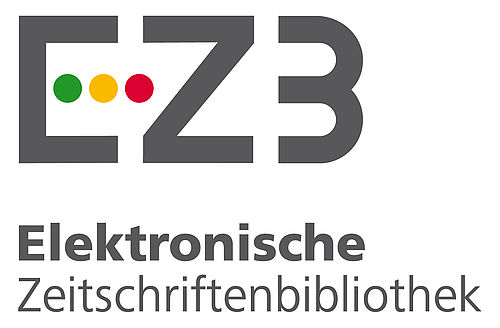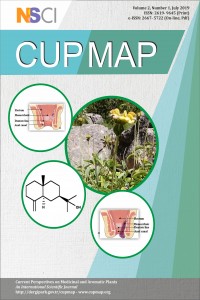Abstract
References
- Ammar I. Ennouri m. Khemakhem B. Yangui T. Attia H. 2012. Variation in chemical composition and biological activities of two species of Opuntia flowers at four stages of flowering. Industrial Crops and Products 37 (2012) 34– 40
- Arslan M. Erbil N. Murathan Z.T. 2018. Ardahan ve Çevresinde Yabani Olarak Yetişen Gilaburu Meyve Ekstraktının Antimikrobiyal, Antioksidan ve Antimutajenik Aktivitelerinin Araştırılması, GÜFBED/GUSTIJ (2018) 8 (1): 18-25
- Bourgaud F. Gravot A. Milesi S. Gontier E. 2001. Production of plant secondary metabolites: a historical perspective. Plant science 161, 839-851.
- Česoniene, L., Daubaras, R., Kraujalyte, V., Venskutonis, P.R. and Šarkinas, A., 2014. Antimicrobial activity of Viburnum opulus fruit juices and extracts, Journal fur Verbraucherschutz und Lebensmittelsicherheit, 9, 2, 129-132
- Dahham S.S. Naiman-Ali M. Tabassum H. Khan M. 2010. Studies on Antibacterial and Antifungal Activity of Pomegranate (Punica granatum L.) American-Eurasian J. Agric. & Environ. Sci., 9 (3): 273-281, 2010
- Dülger B. Gönüz A. 2004. Antimicrobial Activity of certain Plants used in Turkşsh Traditional medicine. Asian Journal of plant Sciences3(1): 104-107
- Eroğlu-Özkan E. Demirci-Kayıran S. Toplan-Gülsoy G. Mataracı-Kara E. Kürkcüoğlu M. 2018. Identıfıcatıon Of Volatıle Compounds And Antımıcrobıal Actıvıtıes Of Muscarı neglectum Growıng In Turkey. Fresenius Environmental Bulletin 21:7 4674-4678
- Ghaima-Kassim K. Hashim Makie N. Abdarlrasool-Ali S. 2013 Antibacterial and antioxidant activities of ethyl acetate extract of nettle (Urtica dioica) and dandelion (Taraxacum officinale). Journal of Applied Pharmaceutical Science Vol. 3 (05), pp. 096-099,
- Hızlısoy, H., 2009. Çeşitli mikroorganizmalar üzerine gilaburunun antimikrobiyal etkisinin incelenmesi. Erciyes Üniversitesi, Sağlık Bilimleri Enstitüsü, Yüksek Lisans Tezi
- Hsu W.Y. Simonne A. Weşssman A. Kim J.M. 2010. Antimicrobial Activity of Greater Galangal [Alpinia galanga (Linn.) Swartz.] Flowers. Food Sci. Biotechnol. 19(4): 873-880 (2010)
- Jeeva S. Johnson M. Aparna J.S. Irudayaraj V. 2011. Preliminary Phytochemical and Anti-Bacterial studies on Flowers of selected medicinal plants. Int. J. Med. Arom. Plants, Vol. 1, No. 2, pp. 107-114.
- Lazarevic, J.S. Dordevic, A.S., Zlatkovic, B.K., Radulovic, S.N., Palic, R.M. 2010. Chemical composition and antioxidant and antimicrobial activities of essential oil of Allium sphaerocephalon L. subsp. sphaerocephalon (Liliaceae) inflorescences. J Sci Food Agric; 91: 322–329.ahboubi A. Asgarpanah J. Sadaghiyani P.N. Faizi M. Total phenolic and flavonoid content and antibacterial activity of Punica granatum L. var. pleniflora flowers (Golnar) against bacterial strains causing foodborne diseases. BMC Complementary and Alternative Medicine 15:366lcek J. Rop O. 2011. Fresh edible flowers of ornamental plants- A new source of nutraceutical foods. Trends in Food Science & Technology 22 (2011) 561-569.
- Pavithra G.M. Saba S. Abhishktha S.N. Prashith K.T.R. Vinayaka K.S. 2013. Antioxidant and antimicrobial activity of flowers of Wendlandia thyrsoidea, Olea dioica, Lagerstroemia speciosa and Bombax malabaricum. Journal of Applied Pharmaceutical Science Vol. 3 (06), pp. 114-120
- Rojas R. Bustamante b. Bauer J. Fernandez I. Alban J. Lock O. 2003. Antimicrobial activity of selected Peruvian medicinal plants. Journal of Ethnopharmacology 88, 199–204
- Sajjadi S.T. Saboora A. Mohammadi P. 2016. Comparison of aglycon and glycosidic saponin extracts of Cyclamen coum tuber against Candida spp. Curr Med Mycol, 2016 Jun, 2(2): 40-44
- Saratale G.R. Benelli G. Kumar G. Kim Su D.2018. Bio-fabrication of silver nanoparticles using the leaf extract of an ancient herbal medicine, dandelion (Taraxacum officinale),evaluation of their antioxidant, anticancer potential, and antimicrobial activity against phytopathogens. Environ Sci Pollut Res (2018) 25:10392–10406.
- Sharifi-Rad J. Sureda A. Tenore G.C. Daglia M. Sharifi-Rad M. et al. 2017. Biological Activities of essental oils: From Plant chemoecology tı Traditional Healing Systems. Molecules, 22, 70;
- Sharma A. Flores-Vallejo R.C. Cardoso-Taketa A. Villarreal M.L. 2017. Antibacterial activities of medicinal plants used in Mexican traditional medicine. Journal of Ethnopharmacology. 208(2017)264–329
- Tunç K. Konca T. Hoş A. 2013. Punica granatum Linn. (nar) bitkisinin antibakteriyel etkisinin araştırılması. SAÜ. Fen Bil. Der. 17. Cilt, 2. Sayı, s. 167-172,
- Türker A.U. Usta C. Biological screening of some Turkish medicinal plant extracts for antimicrobial and toxicity activities. Natural Product Research, Vol. 22, No. 2, 20 January 2008, 136–146
- Usta C. Birinci-Yıldırım A. Uçar-Türker A. 2014. Antibacterial and antitumour activities of some plant grown in Turkey. Biotechnology & Biotechnological Equipment, Vol. 28, No. 2, 306-315,
- Verpoorte R. Contin A. Memelink J. 2002. Biotechnology for the production of plant secondary metabolites. Phytochemistry Rewiews 1: 13-25.
- Xianfei X. Xiaoqiang C. Shunying Z. Guolin Z. 2007. Chemical composition and antimicrobial activity of essential oils of Chaenomeles speciosa from China. Food Chemistry 100 (2007) 1312–1315
Abstract
In the present study, the
antimicrobial activities of methanol extracts obtained from the flowers Muscari neglectum Punica granatum,
Tussilago farfara, Taraxacum officinal, Wisteria sinensis, Syringa vulgaris,
Cyclamen coum, Chaenomeles speciosa, Ornithogalum umbelatum, Allium siculum,
Viburnum tinus and Eryngium bithynicum were evaluated. Extracts with methanol were prepared in soxhlet device. The evaluation process of the antimicrobial activities
was performed using the disc diffusion method.
The highest antimicrobial activity
has been detected at the strain of S.
aureus. The detected inhibition zone diameters of the flower extracts were
evaluated to be 15.5 mm for V. tinus, 15 mm for Eryngium
bithynicum and 14.5 mm for Punica
granatum. It has also been found
that the flower extracts of C. coum and
M. neglectum only affect the C. albicans strain. The flowers of P. granatum has been found to be
effective on all the test microorganisms.
The extracts obtained from W. sinensis,
T. farfara, T. officinal and O. umbelatum have no antimicrobial effect on any test
microorganisms.
It was found that 7 of the 12 plant species used in the
study showed antimicrobial activity. In our study, it was observed that the
extracts obtained from flowers were also effective in inhibiting
microorganisms. To our knowledge, this is the first study to elucidate the antimicrobial
acitivity of E. bithynicum, V. tinus and
A. siculum’s flowers and our results how that the flowers of these species
have the potential that can be used as antimicrobial natural sources.
References
- Ammar I. Ennouri m. Khemakhem B. Yangui T. Attia H. 2012. Variation in chemical composition and biological activities of two species of Opuntia flowers at four stages of flowering. Industrial Crops and Products 37 (2012) 34– 40
- Arslan M. Erbil N. Murathan Z.T. 2018. Ardahan ve Çevresinde Yabani Olarak Yetişen Gilaburu Meyve Ekstraktının Antimikrobiyal, Antioksidan ve Antimutajenik Aktivitelerinin Araştırılması, GÜFBED/GUSTIJ (2018) 8 (1): 18-25
- Bourgaud F. Gravot A. Milesi S. Gontier E. 2001. Production of plant secondary metabolites: a historical perspective. Plant science 161, 839-851.
- Česoniene, L., Daubaras, R., Kraujalyte, V., Venskutonis, P.R. and Šarkinas, A., 2014. Antimicrobial activity of Viburnum opulus fruit juices and extracts, Journal fur Verbraucherschutz und Lebensmittelsicherheit, 9, 2, 129-132
- Dahham S.S. Naiman-Ali M. Tabassum H. Khan M. 2010. Studies on Antibacterial and Antifungal Activity of Pomegranate (Punica granatum L.) American-Eurasian J. Agric. & Environ. Sci., 9 (3): 273-281, 2010
- Dülger B. Gönüz A. 2004. Antimicrobial Activity of certain Plants used in Turkşsh Traditional medicine. Asian Journal of plant Sciences3(1): 104-107
- Eroğlu-Özkan E. Demirci-Kayıran S. Toplan-Gülsoy G. Mataracı-Kara E. Kürkcüoğlu M. 2018. Identıfıcatıon Of Volatıle Compounds And Antımıcrobıal Actıvıtıes Of Muscarı neglectum Growıng In Turkey. Fresenius Environmental Bulletin 21:7 4674-4678
- Ghaima-Kassim K. Hashim Makie N. Abdarlrasool-Ali S. 2013 Antibacterial and antioxidant activities of ethyl acetate extract of nettle (Urtica dioica) and dandelion (Taraxacum officinale). Journal of Applied Pharmaceutical Science Vol. 3 (05), pp. 096-099,
- Hızlısoy, H., 2009. Çeşitli mikroorganizmalar üzerine gilaburunun antimikrobiyal etkisinin incelenmesi. Erciyes Üniversitesi, Sağlık Bilimleri Enstitüsü, Yüksek Lisans Tezi
- Hsu W.Y. Simonne A. Weşssman A. Kim J.M. 2010. Antimicrobial Activity of Greater Galangal [Alpinia galanga (Linn.) Swartz.] Flowers. Food Sci. Biotechnol. 19(4): 873-880 (2010)
- Jeeva S. Johnson M. Aparna J.S. Irudayaraj V. 2011. Preliminary Phytochemical and Anti-Bacterial studies on Flowers of selected medicinal plants. Int. J. Med. Arom. Plants, Vol. 1, No. 2, pp. 107-114.
- Lazarevic, J.S. Dordevic, A.S., Zlatkovic, B.K., Radulovic, S.N., Palic, R.M. 2010. Chemical composition and antioxidant and antimicrobial activities of essential oil of Allium sphaerocephalon L. subsp. sphaerocephalon (Liliaceae) inflorescences. J Sci Food Agric; 91: 322–329.ahboubi A. Asgarpanah J. Sadaghiyani P.N. Faizi M. Total phenolic and flavonoid content and antibacterial activity of Punica granatum L. var. pleniflora flowers (Golnar) against bacterial strains causing foodborne diseases. BMC Complementary and Alternative Medicine 15:366lcek J. Rop O. 2011. Fresh edible flowers of ornamental plants- A new source of nutraceutical foods. Trends in Food Science & Technology 22 (2011) 561-569.
- Pavithra G.M. Saba S. Abhishktha S.N. Prashith K.T.R. Vinayaka K.S. 2013. Antioxidant and antimicrobial activity of flowers of Wendlandia thyrsoidea, Olea dioica, Lagerstroemia speciosa and Bombax malabaricum. Journal of Applied Pharmaceutical Science Vol. 3 (06), pp. 114-120
- Rojas R. Bustamante b. Bauer J. Fernandez I. Alban J. Lock O. 2003. Antimicrobial activity of selected Peruvian medicinal plants. Journal of Ethnopharmacology 88, 199–204
- Sajjadi S.T. Saboora A. Mohammadi P. 2016. Comparison of aglycon and glycosidic saponin extracts of Cyclamen coum tuber against Candida spp. Curr Med Mycol, 2016 Jun, 2(2): 40-44
- Saratale G.R. Benelli G. Kumar G. Kim Su D.2018. Bio-fabrication of silver nanoparticles using the leaf extract of an ancient herbal medicine, dandelion (Taraxacum officinale),evaluation of their antioxidant, anticancer potential, and antimicrobial activity against phytopathogens. Environ Sci Pollut Res (2018) 25:10392–10406.
- Sharifi-Rad J. Sureda A. Tenore G.C. Daglia M. Sharifi-Rad M. et al. 2017. Biological Activities of essental oils: From Plant chemoecology tı Traditional Healing Systems. Molecules, 22, 70;
- Sharma A. Flores-Vallejo R.C. Cardoso-Taketa A. Villarreal M.L. 2017. Antibacterial activities of medicinal plants used in Mexican traditional medicine. Journal of Ethnopharmacology. 208(2017)264–329
- Tunç K. Konca T. Hoş A. 2013. Punica granatum Linn. (nar) bitkisinin antibakteriyel etkisinin araştırılması. SAÜ. Fen Bil. Der. 17. Cilt, 2. Sayı, s. 167-172,
- Türker A.U. Usta C. Biological screening of some Turkish medicinal plant extracts for antimicrobial and toxicity activities. Natural Product Research, Vol. 22, No. 2, 20 January 2008, 136–146
- Usta C. Birinci-Yıldırım A. Uçar-Türker A. 2014. Antibacterial and antitumour activities of some plant grown in Turkey. Biotechnology & Biotechnological Equipment, Vol. 28, No. 2, 306-315,
- Verpoorte R. Contin A. Memelink J. 2002. Biotechnology for the production of plant secondary metabolites. Phytochemistry Rewiews 1: 13-25.
- Xianfei X. Xiaoqiang C. Shunying Z. Guolin Z. 2007. Chemical composition and antimicrobial activity of essential oils of Chaenomeles speciosa from China. Food Chemistry 100 (2007) 1312–1315
Details
| Primary Language | English |
|---|---|
| Journal Section | Research Articles |
| Authors | |
| Publication Date | July 29, 2019 |
| Published in Issue | Year 2019 Volume: 2 Issue: 1 |
Cited By
-------------------------------------------------------------------------------------------------------------------------------













-------------------------------------------------------------------------------------------------------------------------
 CUPMAP Journal is licensed under a Creative Commons Attribution-NonCommercial-NoDerivatives 4.0 International License.
CUPMAP Journal is licensed under a Creative Commons Attribution-NonCommercial-NoDerivatives 4.0 International License.
-----------------------------------------------------------------------------------------------------------------------------------------
This is an open access journal which means that all content is freely available without charge to the user or his/her institution. Users are allowed to read, download, copy, distribute, print, search, or link to the full texts of the articles, or use them for any other lawful purpose, without asking prior permission from the publisher or the author. This is in accordance with the BOAI definition of open access.


